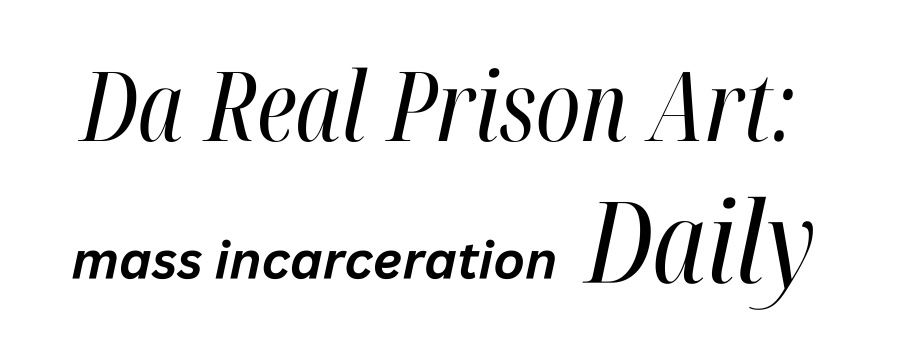Filed
12:00 p.m. EDT
05.03.2025
The administration so far has cut funds for tracking bad cops, shootings and violent extremism, cancelled crime prevention grants, and more.
A police officer uses his computer in Georgetown, Texas, in 2023.
This is The Marshall Project’s Closing Argument newsletter, a weekly deep dive into a key criminal justice issue. Want this delivered to your inbox? Subscribe to future newsletters.
The Trump administration is quickly trying to reshape America’s criminal justice system.
Last week, Attorney General Pam Bondi cancelled hundreds of Department of Justice grants centered on crime prevention to shift its focus toward illegal drug enforcement and the eradication of DEI policies. On Monday, the president signed executive orders to limit police reform and rescind consent decrees that hold police agencies accountable. And recent reporting details how the department’s Office of Civil Rights is transitioning from enforcing civil rights laws to bringing cases against universities and cities passing liberal policies, leading hundreds of attorneys to resign in protest and effectively gutting the division.
But all the news about what these directives are doing can distract from what exactly they’re undoing by rapidly curtailing public access to information about crime and criminal justice.
In the early days of the Trump presidency, government agencies began deleting web pages that promoted “gender ideology” or diversity, equity and inclusion initiatives. As reported by the Journalist’s Resource, pages about gender-based violence and structural racism were taken down and remain offline. The Bureau of Prisons removed from its website its “Transgender Offender Manual,” which outlined policies for interacting with transgender people who are incarcerated. Plus, an overview of definitions and data on hate crimes is no longer accessible on the National Institute of Justice’s website, although some of the material exists on other Justice Department webpages.
Though each change may be minor on its own, together, they interfere with the public’s understanding of the causes of violence, successful crime prevention strategies and the workings of the criminal justice system. Ultimately, without access to this kind of information, it becomes harder to hold the government accountable for its policies around policing and incarceration.
The information ecosystem wasn’t perfect under the Biden administration, either. Around 2020, methodology changes and bureaucratic reshuffling led to significantly less reporting on deaths in custody, a problem that continued throughout Biden’s presidency. In 2022, the Federal Bureau of Investigation finished switching systems for collecting crime data. The Marshall Project reported that 6,000 of 18,000 police agencies did not transition in time, leaving a gaping hole in a primary resource for national crime statistics.
The Trump administration, however, has gone beyond bureaucratic hiccups by actively impeding access to public information. In March, the White House removed an advisory declaring gun violence a public health issue and listing statistics on shootings. According to Mother Jones, major layoffs at the Centers for Disease Control and Prevention have threatened the future of the dataset known as “WISQARS,” which tracks information on gun violence injuries and deaths and has become a critical resource for researchers.
Data collection is often the first step toward addressing serious societal problems. Take the issue of “wandering cops” who transfer between police agencies without their histories of abuse or misconduct following them. In 2022, the Biden administration created the National Law Enforcement Accountability Database, a central place for police departments to search for information about federal law enforcement officers with criminal convictions and misconduct violations. Trump decommissioned the database on his first day in office. State and local agencies come to rely on tools like this to gain insights from other jurisdictions and compare the success of different programs, but that work is becoming increasingly challenging.
Federal agencies are also removing research staff, cutting funding and eliminating grants that, over time, build a portfolio of knowledge around criminal justice issues. There are plenty of examples on the topic of gun violence alone. At the Department of Homeland Security, officials discontinued an advisory board that was developing evidence-based best practices to prevent school shootings. At the Centers for Disease Control and Prevention, the research team studying gun violence was decimated by layoffs, losing about three-quarters of its staff.
As for the funding cuts at the Department of Justice last week, the changes have far-reaching implications for researchers trying to better understand crime patterns and prevention strategies. An analysis of the list of canceled Justice Department grants published by Reuters shows that at least 44 grants worth more than $47 million were slated for research projects, including research on juvenile justice, violent extremism, elder abuse, policing strategies and reentry programs.
The Justice Department also cut all funding to the Prison Rape Elimination Act Resource Center. Passed unanimously by Congress in 2003, PREA mandated data collection on incidents of sexual assault in prisons to identify paths to prevention. The act led the National Institute of Justice to fund the Culture of Prison Sexual Violence study, the largest ethnographic study of incarcerated people ever conducted, which resulted in a long list of recommendations for prisons and jails. The study found that more than 9% of incarcerated people were aware of a rape committed by a correctional staff member. Follow-up research projects are now in limbo due to the federal government’s funding cuts.
In a seeming contradiction, the Trump administration is hoping to streamline and encourage data collection on crime rates. Monday’s executive order on policing included a mandate to “increase the investment in and collection, distribution, and uniformity of crime data across jurisdictions.” Project 2025 — a conservative policy blueprint for the Trump presidency — wrote favorably of the Justice Department’s National Crime Victimization Survey, saying officials “should prioritize and sufficiently fund it.” Trump has already implemented several Project 2025 recommendations for the Justice Department.
For the data and information that is now shielded from public view, there are a number of organizations racing to restore access. The Project on Government Oversight has a searchable database of 160 investigative records taken offline in February that document alleged abuses by the Department of Homeland Security. Harvard University has compiled data on health equity and environmental justice and made the information available online. The Data Rescue Project is archiving millions of records on youth behaviors, education, COVID-19 and more. There’s also the Wayback Machine, an easily accessible tool for finding older versions of web pages that have since been altered or removed from the internet. It offers users an option to archive websites as they exist today.
Have you seen examples of how data and research on the criminal justice system are changing under the Trump administration or have data to share? Share them with Jill at jcastellano@themarshallproject.org.
This post was originally published on this site be sure to check out more of their content.






